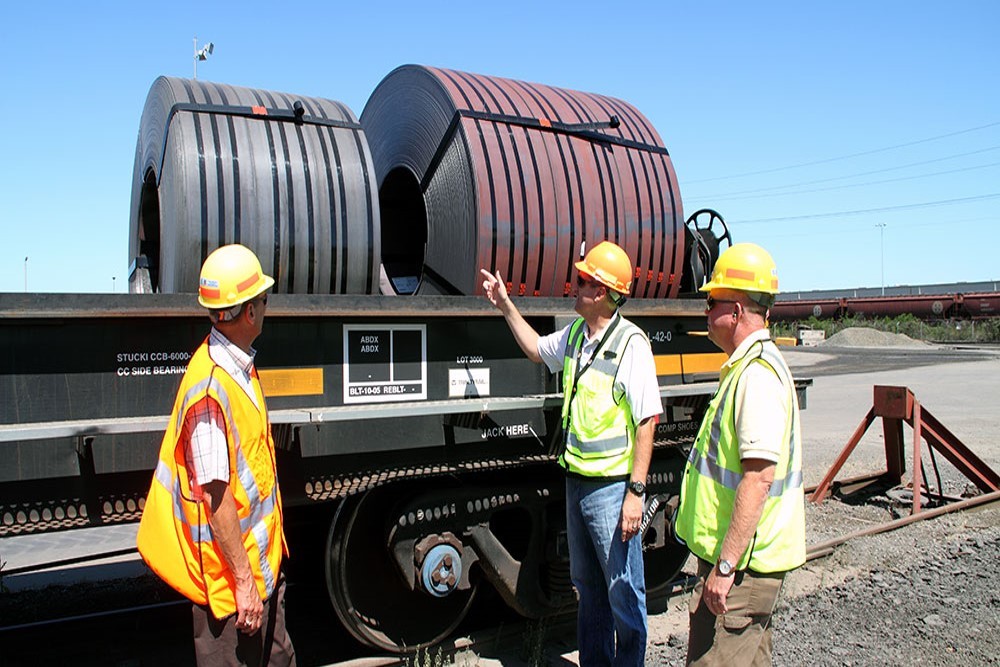Unless you’re involved in industries like construction or manufacturing, you might not often think about rolled metal sheets. However, coiled steel is fundamental to many everyday products, from the cars we drive to home appliances and even gym lockers. Railroads play a critical role in transporting coiled steel and other metal commodities to manufacturing plants, where they are transformed into market-ready goods. In 2019 alone, railroads in the US transported nearly 569,000 carloads of steel and primary metal products, according to the Association of American Railroads (AAR). Coiled steel is transported using specialized rail cars known as coil cars, designed with troughs or compartments to securely hold coils of various sizes. Let’s delve deeper into coil cars and how they ensure the safe transportation of coiled metals on rail.
What is a Coil Rail Car Used For?
A coil car is specifically engineered for shipping coiled steel – essentially rolled metal sheets. This steel is a vital component in construction and the manufacturing of a wide array of products, including automobiles, industrial machinery, and common household appliances. These specialized railcars are essential for industries that rely on the efficient and safe delivery of steel coils.
What Does a Coil Car Look Like?
Coil cars are available in various lengths, tonnage capacities, and designs tailored to specific commodities. Some feature troughs that prevent coils from rolling during transit, while others incorporate side brackets to secure loads without cables. Certain designs even eliminate the need for special securing measures altogether. While coil cars frequently transport goods resistant to weather, many are equipped with protective “hoods.” These hoods offer crucial protection when needed and can be conveniently stacked when not in use, providing versatility for different types of cargo.
How Is a Coil Car Loaded and Unloaded?
The loading and unloading of steel coils onto coil cars typically involve the use of overhead cranes or forklifts. These heavy-duty machines are necessary to handle the substantial weight and size of steel coils efficiently and safely, ensuring a smooth logistical process at both shipping and receiving points.
Why do Shippers Use Coil Cars?
Shippers choose coil cars for their ability to move substantial freight volumes in a single shipment. Capable of carrying loads up to 200,000 pounds per car, coil cars offer a more efficient and cost-effective shipping solution compared to trucking. Remarkably, a single train can transport the equivalent freight of 300 trucks. Furthermore, railroads are significantly more fuel-efficient than trucks, on average by three to four times. Utilizing rail transport and coil cars helps reduce congestion on highways by removing hundreds of trucks from the road, contributing to a more sustainable and efficient transportation network.
Coil Car Fun Facts
- Coil cars are designed to handle loads up to approximately 200,000 pounds, demonstrating their robust carrying capacity.
- A covered coil car typically uses two “hoods” or lids, each around 26 feet in length and weighing about 2,400 pounds, to protect cargo from the elements.
Learn More
To discover more about coil cars or explore the benefits of shipping metals and construction materials by rail, reach out for further information.
Related Articles
